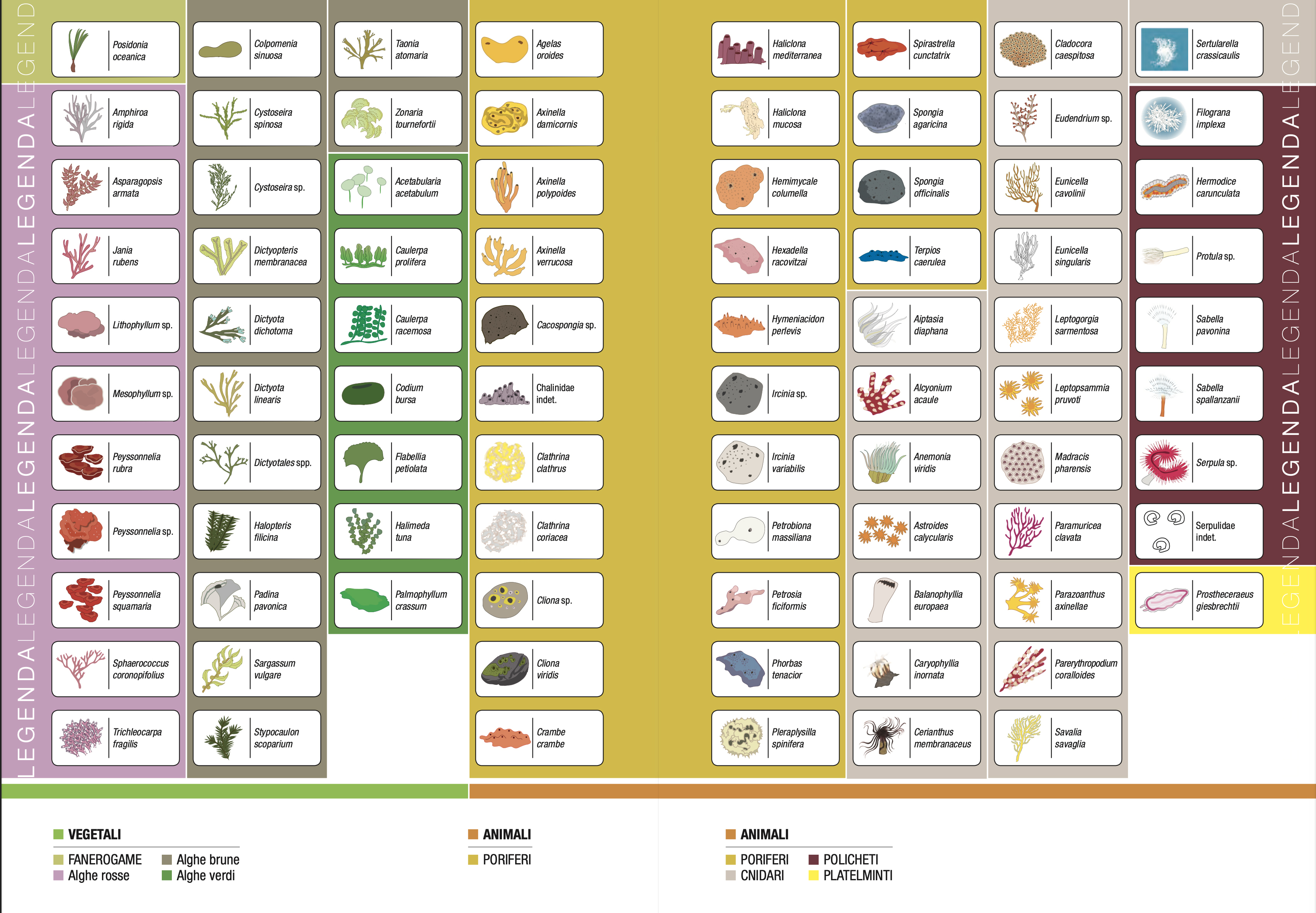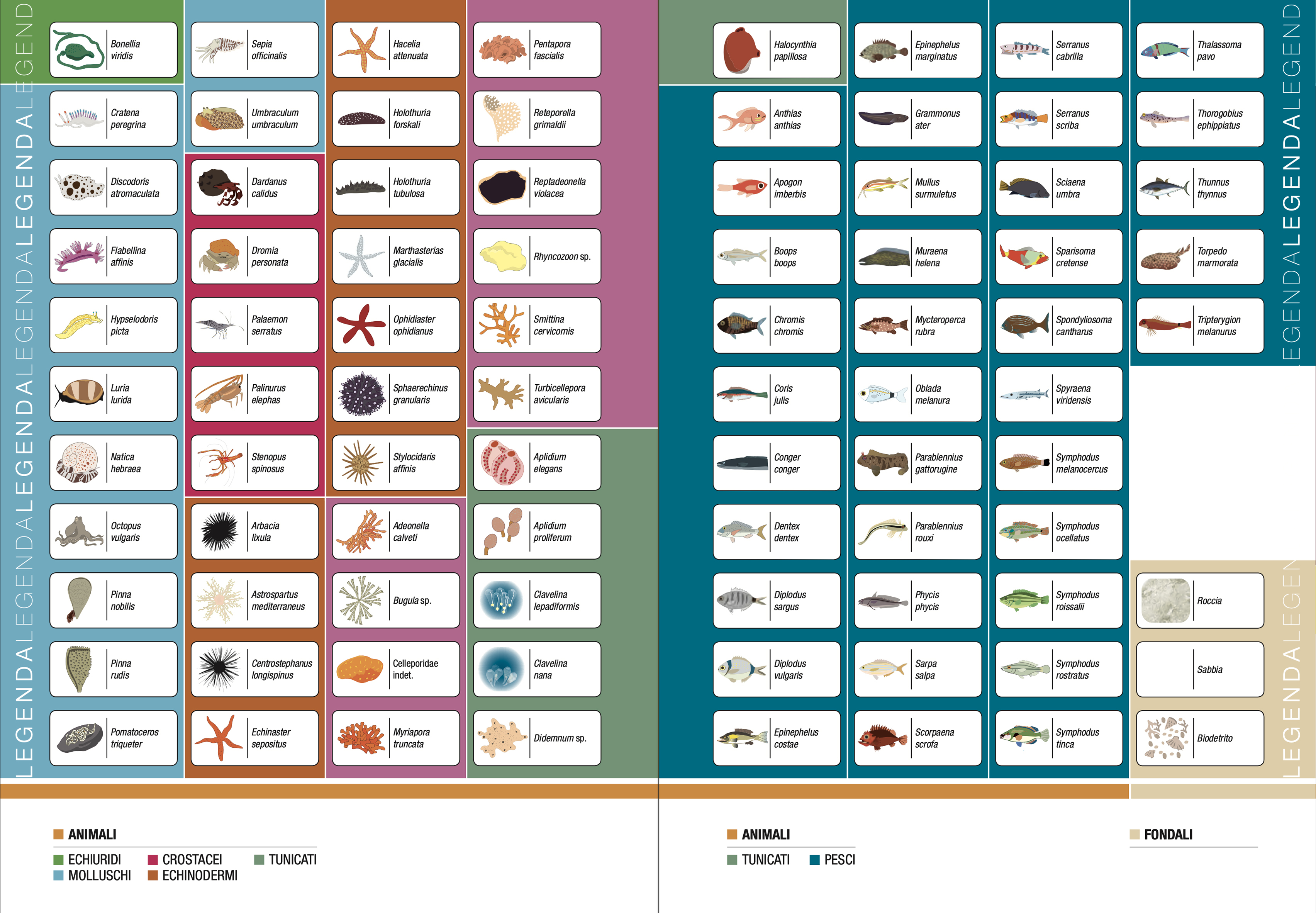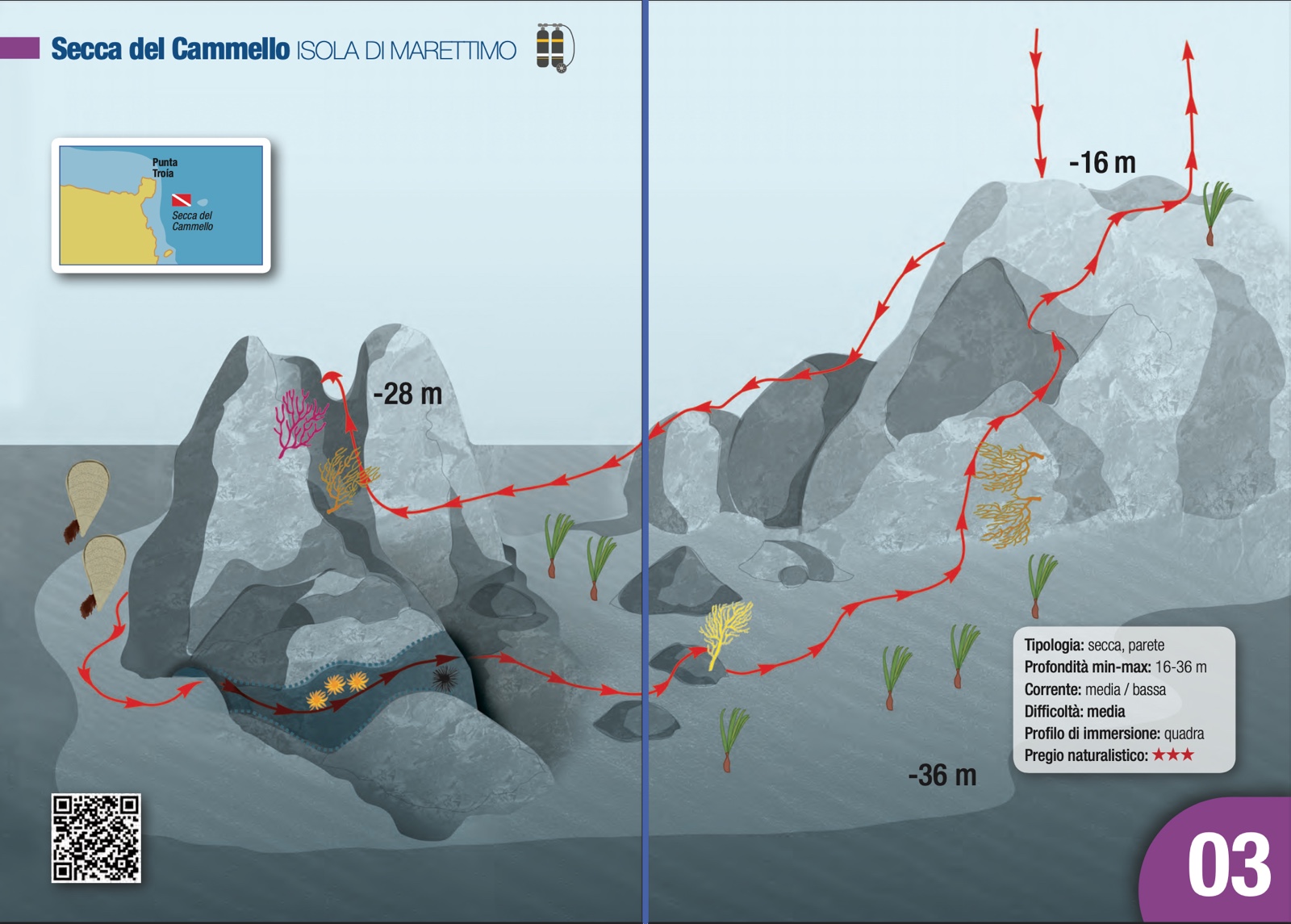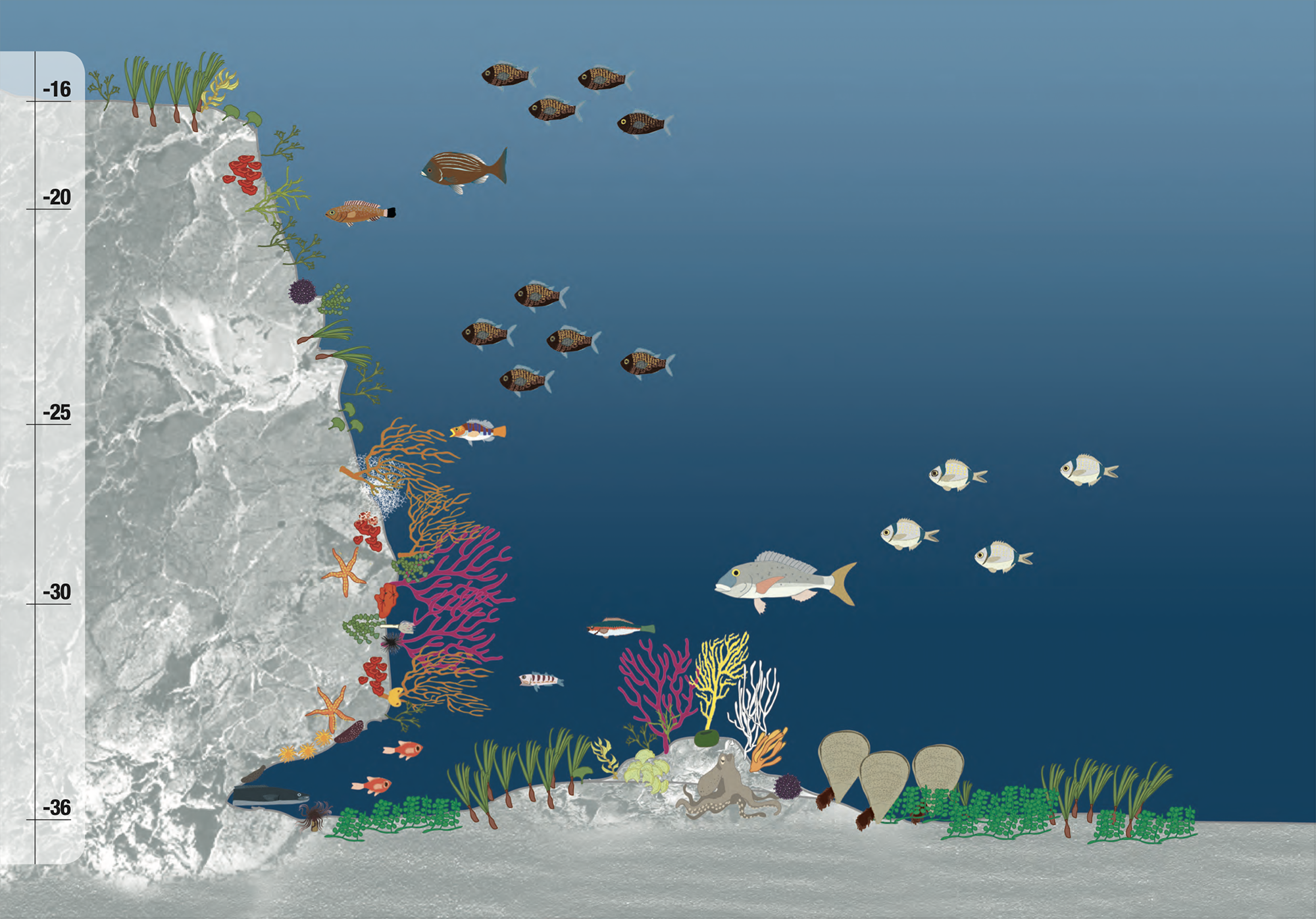Site 3 - Secca del Cammello
The articulated morphology of the underwater landscape and some biological peculiarities make this itinerary interesting. The top of the shoal is about 1 km from shore and at a depth of about 16 m, where algae (Caulerpa racemosa, Flabellia petiolata, Sargassum vulgare, Dictyota linearis) and posidonia form a green carpet. From here one swims towards a large boulder, a carbonate rock outcrop along whose north-eastern flank two sub-horizontal surfaces a few metres wide were observed, forming two 'humps' that give the shoal its name. Along the wall, colourful patches of sponges (Spirastrella cunctatrix) and colonies of gorgonia (Eunicella cavolinii, Paramuricea clavata) on which clusters of ascidians (Clavelina lepadiformis) grow. In the crevices, numerous diadem urchins (Centrostephanus longispinus) and specimens of the red star Hacelia attenuata can be seen. Heading towards the bottom, at around 30 m, the rocky substrate is enriched with other species, such as sponges (Agelas oroides, Chondrosia reniformis), snake stars (Ophidiaster ophidianus) and protulae with clearly visible gill tufts (Protula sp.). On the biodetritic seabed, at 34 m, the green alga C. racemosa forms a dense network covering the seabed interspersed with patches of the brown alga Cystoseira spinosa and sparse tufts of Posidonia oceanica. Here and there, scattered on the bottom, specimens of Pinna nobilis can be seen. At the bottom, a passage also forms a small gallery on the vault of which one notices the yellow madrepore Leptopsammia pruvoti, the red ascidian Halocynthia papillosa, the grey holoturia Holoturia tubulosa, the sea urchin Sphaerechinus granularis and at the bottom one notices the cerianthus Cerianthus membranaceus. Numerous mullet kings (Apogon imberbis), a few specimens of perch (Serranus cabrilla) and a conger eel (Conger conger) swim or find burrows near the passage. Outside the tunnel, burrows of octopus (Octopus vulgaris), specimens of burbot (Spondyliosoma cantharus) and dentex (Dentex dentex) can be seen. On this seabed, dominated by green algae, a beautiful branch of false black coral (Savalia savaglia) stands out with its yellow colour on an isolated boulder at 34 m. Up the wall, the tree-like hydrozoan Sertularella crassicaulis and numerous algae (Dictyotales spp., F. petiolata, Halimeda tuna) can be seen. A few specimens of black-tailed wrasse (Symphodus melanocercus) swim among the algae, while clouds of banded seabream (Diplodus vulgaris) and damselfish (Chromis chromis) swim along the crest of the shoal.
Legend:


-
Information
-
Contacts

